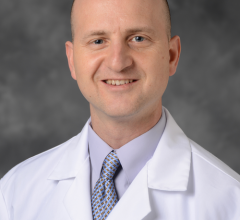
August 26, 2014 — A recent study completed at the University of Eastern Finland provides new information on the limitations and potential new directions for the future development of transcranial ultrasound therapy. Active research is taking place in the field of transcranial ultrasound therapy, which in the future can potentially be applied to the treatment of brain tumors and targeted drug delivery. The therapy modality has already been successfully applied to the treatment of neuropathic pain disorder and essential tremors. The benefits of transcranial ultrasound therapy include minimal invasiveness, as the treatment is delivered to the brain by transmitting ultrasound through the intact skull of the patient. The study focuses on two issues that may potentially limit the applicability of transcranial ultrasound: skull-base heating and formation of standing-waves.
Skull-base Heating Must be Taken Into Account in Treatment Planning
As the ultrasound beam encounters the skull bone, part of the beam's energy is transferred into the skull as heat. In the study, it was found that the heating of the skull-base during transcranial ultrasound therapy can result in hazardous temperature elevations when the sonications are performed close to the skull-base. Three new methods to counteract this potentially hazardous phenomenon were developed in the study.
Standing waves, on the other hand, are formed in the ultrasound field when waves reflect from the surface of the skull bone. During transcranial ultrasound therapy, the ultrasound amplitude can reach higher levels than intended if these reflections are not taken into account during the initial treatment planning. The study found that the formation of standing waves is greatly reduced when specifically designed large-area ultrasound transducers are used.
A Numerical Method to Simulate Propagation of Ultrasound
The study also introduces a model to numerically simulate clinical patient treatments performed with transcranial ultrasound therapy. The predictions produced by the model were compared to observations done in clinical patient trials performed earlier. The predictions were found to be of an adequate accuracy for an initial treatment planning. However, more accurate characterization of the acoustical and thermal parameters involved in transcranial ultrasound therapy are nevertheless needed.
For more information: epublications.uef.fi/pub/urn_isbn_978-952-61-1510-8/urn_isbn_978-952-61-1510-8.pdf


 November 21, 2025
November 21, 2025 









